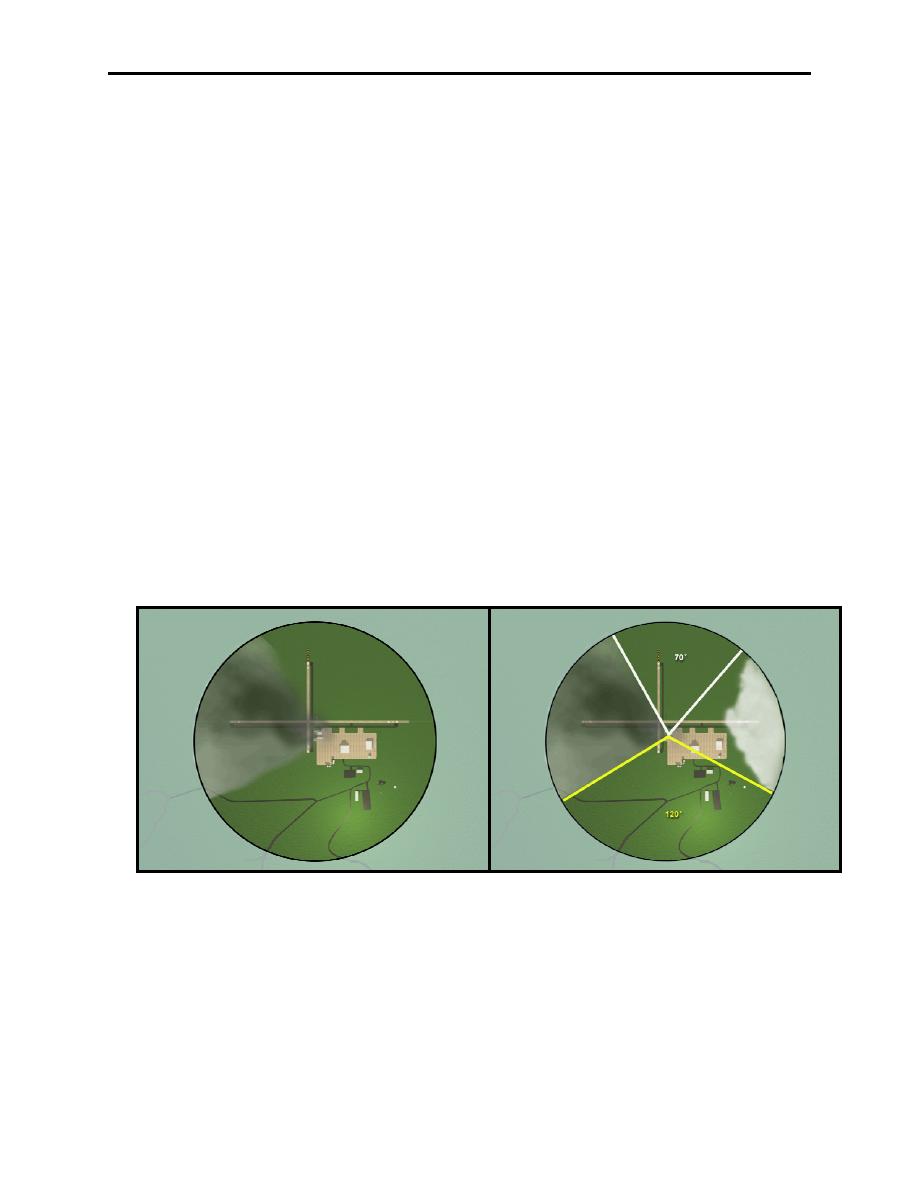 |
|||
|
|
|||
|
Page Title:
Figure 5-14. Prevailing Visibility Determination |
|
||
| ||||||||||
|
|  CHAPTER FIVE
AVIATION WEATHER
509.
VISIBILITY DEFINITIONS
Visibility is important to all aviators since it plays an essential role in takeoffs, approaches, and
landings. Visibility is defined as the ability to see and identify prominent unlighted objects by
day and prominent lighted objects at night, and is expressed in statute miles, hundreds of feet, or
meters. There are several particular methods of reporting visibility, some of which are defined
below.
Flight visibility is the average forward horizontal distance, measured in statute miles from the
cockpit of an aircraft in flight, at which a pilot can see and identify prominent unlighted objects
by day and prominent lighted objects at night.
Prevailing visibility is the greatest horizontal visibility, measured in statute miles, equaled or
exceeded throughout at least half the horizon circle, which need not be continuous. Figure 5-14
illustrates how prevailing visibility is determined. The center of the circles depict the
observation point and the edge of the circles represent a distance of three miles, the furthest that
prominent objects may be seen and identified. In the left depiction, the maximum visibility
common to half or more of the horizon circle is three miles, so the prevailing visibility is three
miles. If a bank of fog were to roll in to the airfield, as in the right depiction, visibility toward the
east would be reduced. However, the observer can still see three miles throughout at least 180
of view, so the prevailing visibility is still three miles. Look at the visibility for each of the
runways, and notice how the actual visibility may vary significantly from the prevailing
visibility.
Figure 5-14 Prevailing Visibility Determination
Slant Range Visibility is the distance on final approach when the runway environment is in sight.
This is probably the most vital weather information needed during a final approach in
questionable weather. Unfortunately, slant rage visibility is not often provided because of great
difficulty in estimating or measuring it from the ground. Runway Visual Range (RVR) provides
the best indication of the slant range visibility. However, other weather information such as
precipitation and prevailing visibility help indicate slant range visibility.
5-20
Weather Hazards of Turbulence, Icing, Ceilings, Visibility, and Ash Clouds
|
|
Privacy Statement - Press Release - Copyright Information. - Contact Us |